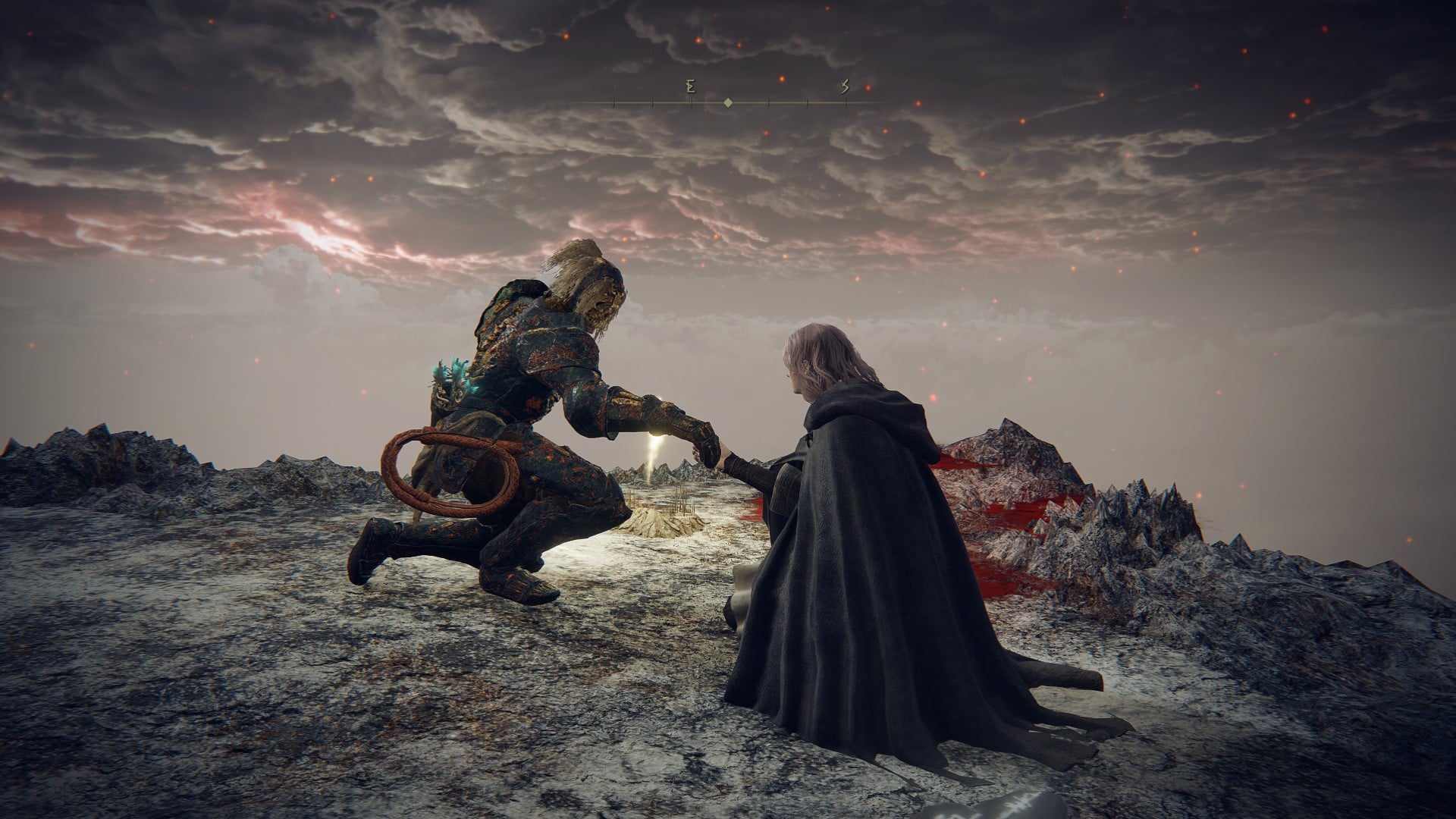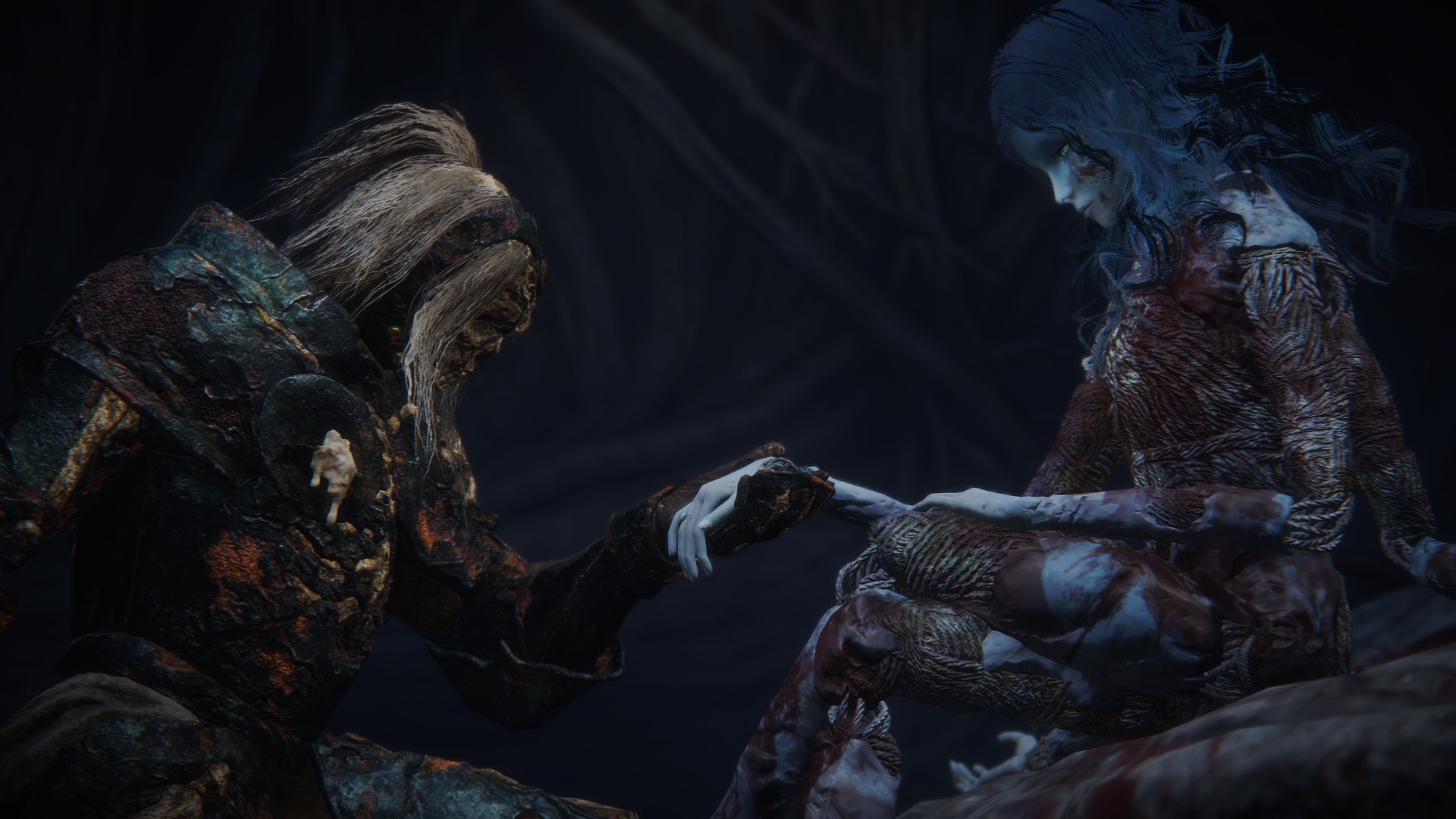
Lover ahead: How queerness is rooted in the narrative of Elden Ring
Something that caught my notice early on in Elden Ring was the introduction of “Finger Maidens” (for the purposes of brevity we will be skimming over the homoerotic subtext the frequent discussion of “fingers” lends the game) and there being an order of exclusively women. Gender exists and is often acknowledged in The Lands Between – which makes the places where that seems less important all the more interesting.
For instance, anyone can be Elden Lord and with it, can become Queen Marika’s “consort” which is a fancy way of saying the spouse of a reigning monarch. Nobody takes issue if the player’s “tarnished” (forgotten, exiled warriors) seeking to claim that role is a woman and the game does acknowledge the player’s chosen gender, even if the character creator is less explicit than the game’s NPCs, breaking it down into “Body Type A” and “Body Type B”. The character creator removes a lot of gendered language from the equation but it’s little more than a formality since the game slots a player’s character into one or the other regardless. It’s a little muddled in what it wants to communicate in terms of letting players define their gender.
What feels more considered is the existence of same-sex relationships.
As mentioned before, anyone can become Queen Marika’s consort and players may also pursue a questline in which they become consort to Ranni the Witch. Calling these subplots “romantic” would be, frankly, laughable since they’re quite explicitly about fulfilling the roles and rituals of the world around them in the pursuit of other ends. Players might infer something in Ranni’s questline, there is an exchanging of rings and a tenderness to the idea you will make sure she isn’t alone on her “thousand year voyage to the stars”, but Queen Marika is, uh, pretty much a corpse. For the most part, becoming a consort is really about bending the infrastructure around the titular Elden Ring and the Erdtree to your own ends. Some might say this is so divorced from notions of gender that it’s more gender agnostic than anything queer. You might even say it’s simply because it’s easier than trying to implement multiple options. Except this isn’t the first time FromSoftware has tackled this kind of subplot.

In Dark Souls 3, the players doing the Lord of Hollows questline will have to “wed” a character named Anri of Astora. The wedding is a ritual involving stabbing your spouse through the face with a sword, which is certainly a more original idea than doing your own vows. Importantly, Anri is always the opposite of the player character’s gender, ensuring that this messed up marriage with swords in faces is, at least, heteronormative. So FromSoftware went explicitly out of their way before to keep things hetero while in Elden Ring, playing a female character has you with nothing but same-sex options. It feels deliberate, is the thing. There are no female Elden Lords preceding you so in that sense, a female tarnished taking the role might be the greatest upending of the system’s defined parameters. Be gay, exploit ancient systems of divine rule!
All of this gets a little more complicated once you factor the relationship between the current Elden Lord (at the game’s outset) Radagon, and Queen Marika. Namely that they might be the same person. A secret message in the Royal Capitol of Lleyndell (accessed by using the Regression Incantation on a certain statue) literally says “Radagon is Marika”. This could be a euphemism but the cutscene that introduces them before their boss fight has Queen Marika suspended upon what might be the Elden Ring itself (or a piece of it) with which they’ve become infused. Upon falling to the ground however, they transform, their golden hair turning red and their body assuming a more masculine form. When the fight begins this figure is named Radagon of the Golden Order.
Have the two merged into one being? Or was Radagon always Marika, are the two forms expressions of a gender fluid deity? The two halves seem in conflict, with the game stating in the description of Marika’s hammer “The tool with which Queen Marika shattered the Elden Ring and Radagon attempted to repair it”.
I wonder if Elden Ring is about conformity. Conformity to “conservative” traditions as represented in the Golden Order and the meddling influence of the Greater Will, the unseen “outer god” pulling the strings in The Lands Between. Radagon/Marika can be seen to represent someone torn in two by their need to both conform for the sake of security, as well as their desire to break free of it. Into that conflict steps the player, an exiled tarnished with a tenuous claim to the throne that is deemed unseemly by the established powers of the world. Gender clearly plays a role in this. The questline which leads to arguably the greatest destruction of the Golden Order and the world’s status quo, is the conclusion of Ranni’s questline, in which she appears to be taking divine rule far from The Lands Between, leaving its fate in the hands of its people rather than its rulers. Which just so happens to be the questline and ending most explicit about the whole “consort” thing. One of the versions of that ending being two wives running off to the stars together, having left a theocratic monarchy in tatters, is just about the gayest thing I’ve ever heard. Which is not something I ever expected to say about Elden Ring prior to playing it.

Perhaps I should have. The myths and legends which FromSoftware games evoke are not without their own queer subtexts. Recent adaptation of the 14th century Arthurian poem, The Green Knight, a popular piece of comparison for the game, didn’t shy away from this. In both the film and the original poem, Gawain exchanges a kiss with a Lord hosting him for a time on his journey, as part of a deal between the two men. A hint at Gawain’s unspoken desires? Possibilities he hadn’t considered until stepping outside the confines of Camelot? Such expressions of love and affection between men, epitomised in certain readings of Achilles and Patroclus (as seen in the excellent novel The Song of Achilles) are present in various European mythologies but same-sex relationships between women are scarce (women’s sexuality in general has seldom been the subject of stories in European history), so it’s all the more fascinating for Elden Ring to specifically make room for them. As far I’m aware (and given the impossible depths and secrets of the game I cannot truly rule it out) there are no same-sex relationships for male player characters in the game, unless you count pining after Blaidd or giving Iron Fist Alexander a cheeky spanking.
In that historical context, Elden Ring making room for sapphic relationships feels as part of a righting of the scales as challenging the world order within the game itself. Sure the relationship between the player’s tarnished and Ranni the Witch is pretty sexless (though that hasn’t stopped legions of fans doing god’s work and populating the internet with artwork to fill that very need) but within its own narrative framework, with connection fleeting, both in time and space, this still stands out as a significant bit of expression. So ladies, go get your big four armed wife and why not destroy a god while you’re at it?







